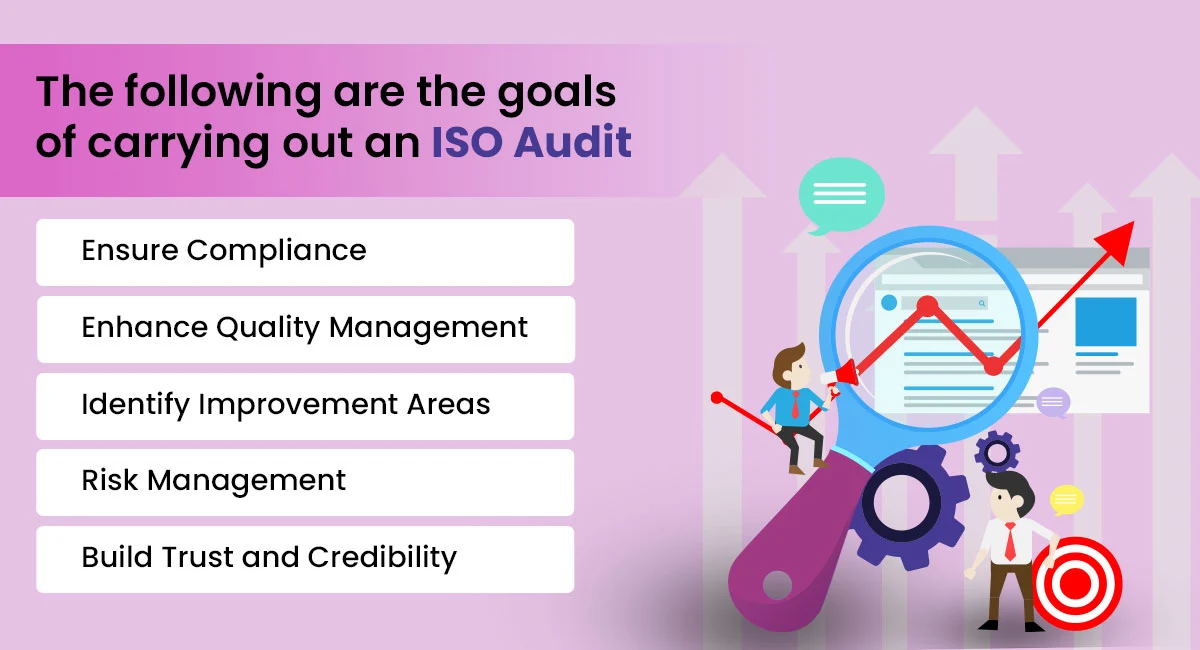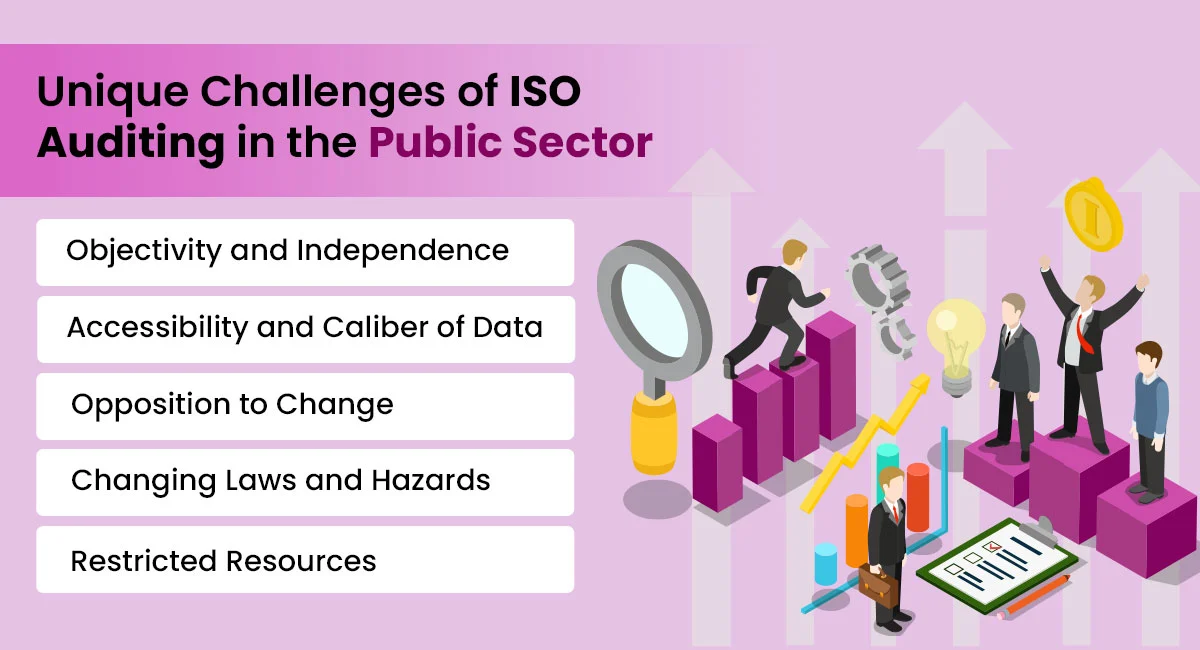Working in a transparent and cooperative setting allows auditors to pinpoint issue areas and offer strategic recommendations that help advance the company. However, in many firms, there is a gulf or mistrust between the audit function and the rest of the company, preventing this open collaboration.
During ISO auditing, public sector organizations are evaluated and validated for their adherence to standards set by the International Organization for Standardization (ISO). ISO standards provide organizations with a framework for improving their management systems, such as quality, environmental, and safety management systems.
They may lack access to the data required to produce reports and tactical suggestions. They are left in the dark, and instead of being a source of information, the rest of the company could view them as needless annoyances. Here, ISO certification will help you to understand many details regarding this.
Today, we will discover the unique challenges and practices of ISO Auditing in the public sector.
To ensure the management system has been implemented as intended, businesses conduct ISO auditingto assess, validate, and verify procedures about the security, safety, and quality of goods and services.

The auditee and the auditor are typically involved in anISO audit. The person in charge of conducting the audit is the auditor. The person or party the auditor is auditing simultaneously serves as the auditee.
A few reasons makeISO auditscrucial: they can reveal operational gaps in your company and help you establish the most effective risk management plan by determining if you comply withISOstandards.
These audits enable corrective action to better fulfillISOcriteria by identifying non-compliance areas. In addition to helping you create new processes or reach out to new clientele, an ISO audit may be included in the first stages of a risk assessment strategy. A well-crafted audit plan will help you begin yourISO certification.

It might be difficult to remain impartial and independent, particularly when auditing organizations or people they have a professional connection with. The objective evaluation is the internal auditor's responsibility, and any apparent conflicts of interest need to be handled with caution.
When internal auditors suggest making modifications or enhancements to procedures and controls, staff members or management may take offense. People's fear, ignorance, or worries about their duties and obligations are common reasons they are reluctant to change.
Resource limitations, such as a lack of money, personnel, or technology, may affect internal auditors' capacity to conduct exhaustive audits and sufficiently cover every part of the company.
The corporate environment is ever-changing, with new risks and laws appearing daily. Staying on top of these developments and ensuring audit procedures meet the latest standards may be quite difficult for internal auditors.
Data collection and analysis are among the most important aspects of the internal audit process. Internal auditors may, however, run into issues with the quality, quantity, and accessibility of the data needed for efficient audits.
In 2020, the Institute of Internal Auditors (IIA) polled its membership and found that the largest obstacle to fostering alignment between internal audit and business functions was a lack of continuous communication (45%). This was followed by business functions' mistrust of internal audit (22%) and unclear lines of process ownership (21%).
Miscommunication and labor duplication between departments result from unclear roles and duties and insufficient divisional collaboration in understanding goals in many businesses. However, some auditors have solved these problems in novel ways.
In today's highly regulated world, auditors ought to be involved immediately, collaborating with the compliance and risk management teams to develop a plan for identifying and controlling risk. Nonetheless, auditors frequently find it difficult to be heard. Here,ISO Training and Programwill help you.
Comprehensive analytics are essential for auditors and you will get an idea of this throughISO lead auditor certification. They can assist us in developing better audit programs, improving the value audit brings to the company, and better understanding procedures and data flow. However, organizational functions frequently refuse to provide the audit team access to their data.
However, auditors might increase the amount of data they access by attempting to be useful to organizational operations. Utilizing technology may save time by eliminating the need to work on labour-intensive manual processes, giving us more time to build stronger working connections with our auditees.
Look at how you can utilize your talents to assist them by offering advisory services in compliance with appropriate auditing standards and fostering team confidence to obtain access to data from other organizational functions. Enhanced cooperation will enable you to obtain the data required to ensure the success of both groups.
According to auditors, executive management frequently fails to acknowledge the importance of the audit team. They often believe that the purpose of auditors is only to verify controls, and they want the audit team to continue operating in the same manner.
The audit team has frequently failed to explain how they bring value or has had difficulty developing ideas. Low engagement between the audit teams and senior leadership is the outcome of all of this.
Lastly, assisting other risk and compliance partners within the company as a consultant is one of the finest methods to improve the audit's reputation.ISO lead auditor certificationwill help you with the latest information for this.
By doing this, you may better showcase your team's abilities, show off the audit's work collaboratively, encourage other units to get in touch with the audit, and expand the ways in which the audit can provide value.
The barriers toISO auditingin the public sector include opposition to change, limited resources, shifting laws and dangers, objectivity and independence, accessibility, and data quality. Despite these barriers, auditors can effectively handle these issues by implementing best practices.
Building strong working connections with all stakeholders inside the business is essential to promoting alignment and removing obstacles to communication.ISO training and certificationhelp you toenhance the analytics for real-time risk insights and fostering better collaboration through new auditing technologies can give auditors the resources they need to conduct exhaustive audits.
The position of auditors inside the company may also be elevated, and their worth can be demonstrated by enhancing contact with top management and developing into a resource for information through the provision of data-driven content.Confused about our certifications?
Let Our Advisor Guide You